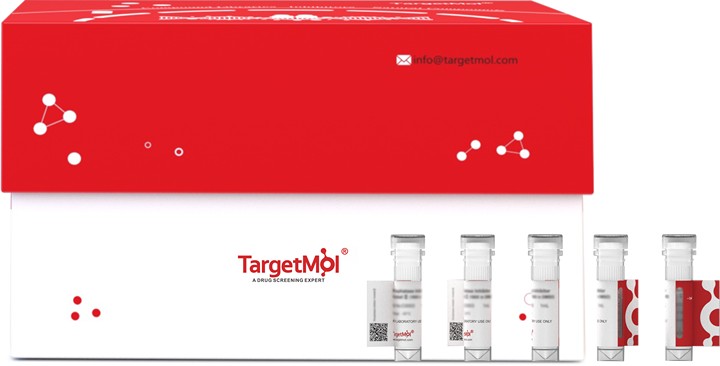- Remove All
 Your shopping cart is currently empty
Your shopping cart is currently empty
POLR3A Protein, Human, Recombinant (His)
DNA-dependent RNA polymerase catalyzes the transcription of DNA into RNA using the four ribonucleoside triphosphates as substrates. Largest and catalytic core component of RNA polymerase III which synthesizes small RNAs, such as 5S rRNA and tRNAs. Forms the polymerase active center together with the second largest subunit. A single-stranded DNA template strand of the promoter is positioned within the central active site cleft of Pol III. A bridging helix emanates from RPC1 and crosses the cleft near the catalytic site and is thought to promote translocation of Pol III by acting as a ratchet that moves the RNA-DNA hybrid through the active site by switching from straight to bent conformations at each step of nucleotide addition. Plays a key role in sensing and limiting infection by intracellular bacteria and DNA viruses. Acts as nuclear and cytosolic DNA sensor involved in innate immune response. Can sense non-self dsDNA that serves as template for transcription into dsRNA. The non-self RNA polymerase III transcripts, such as Epstein-Barr virus-encoded RNAs (EBERs) induce type I interferon and NF- Kappa-B through the RIG-I pathway.

POLR3A Protein, Human, Recombinant (His)
| Pack Size | Price | Availability | Quantity |
|---|---|---|---|
| 20 μg | $198 | 20 days | |
| 100 μg | $427 | 20 days | |
| 1 mg | $1,830 | 20 days |
Product Information
| Biological Activity | Activity has not been tested. It is theoretically active, but we cannot guarantee it. If you require protein activity, we recommend choosing the eukaryotic expression version first. |
| Description | DNA-dependent RNA polymerase catalyzes the transcription of DNA into RNA using the four ribonucleoside triphosphates as substrates. Largest and catalytic core component of RNA polymerase III which synthesizes small RNAs, such as 5S rRNA and tRNAs. Forms the polymerase active center together with the second largest subunit. A single-stranded DNA template strand of the promoter is positioned within the central active site cleft of Pol III. A bridging helix emanates from RPC1 and crosses the cleft near the catalytic site and is thought to promote translocation of Pol III by acting as a ratchet that moves the RNA-DNA hybrid through the active site by switching from straight to bent conformations at each step of nucleotide addition. Plays a key role in sensing and limiting infection by intracellular bacteria and DNA viruses. Acts as nuclear and cytosolic DNA sensor involved in innate immune response. Can sense non-self dsDNA that serves as template for transcription into dsRNA. The non-self RNA polymerase III transcripts, such as Epstein-Barr virus-encoded RNAs (EBERs) induce type I interferon and NF- Kappa-B through the RIG-I pathway. |
| Species | Human |
| Expression System | E. coli |
| Tag | N-6xHis |
| Accession Number | O14802 |
| Amino Acid | FPEKVNKANINFLRKLVQNGPEVHPGANFIQQRHTQMKRFLKYGNREKMAQELKYGDIVERHLIDGDVVLFNRQPSLHKLSIMAHLARVKPHRTFRFNECVCTPYNADFDGDEMNLHLPQTEEAKAEALVLMGTKANLVTPRNGEPLIAAIQDFLTGAYLLTLKDTFFDRAKACQIIASILVGKDEKIKVRLPPPTILKPVTLWTGKQIFSVILRPSDDNPVRANLRTKGKQYCGKGEDLC |
| Construction | 392-632 aa |
| Protein Purity | > 90% as determined by SDS-PAGE. |
| Molecular Weight | 31.4 kDa (predicted) |
| Endotoxin | < 1.0 EU/μg of the protein as determined by the LAL method. |
| Formulation | If the delivery form is liquid, the default storage buffer is Tris/PBS-based buffer, 5%-50% glycerol. If the delivery form is lyophilized powder, the buffer before lyophilization is Tris/PBS-based buffer, 6% Trehalose, pH 8.0. |
| Reconstitution | Reconstitute the lyophilized protein in sterile deionized water. The product concentration should not be less than 100 μg/mL. Before opening, centrifuge the tube to collect powder at the bottom. After adding the reconstitution buffer, avoid vortexing or pipetting for mixing. |
| Stability & Storage | Lyophilized powders can be stably stored for over 12 months, while liquid products can be stored for 6-12 months at -80°C. For reconstituted protein solutions, the solution can be stored at -20°C to -80°C for at least 3 months. Please avoid multiple freeze-thaw cycles and store products in aliquots. |
| Shipping | In general, Lyophilized powders are shipping with blue ice. Solutions are shipping with dry ice. |
| Research Background | DNA-dependent RNA polymerase catalyzes the transcription of DNA into RNA using the four ribonucleoside triphosphates as substrates. Largest and catalytic core component of RNA polymerase III which synthesizes small RNAs, such as 5S rRNA and tRNAs. Forms the polymerase active center together with the second largest subunit. A single-stranded DNA template strand of the promoter is positioned within the central active site cleft of Pol III. A bridging helix emanates from RPC1 and crosses the cleft near the catalytic site and is thought to promote translocation of Pol III by acting as a ratchet that moves the RNA-DNA hybrid through the active site by switching from straight to bent conformations at each step of nucleotide addition. Plays a key role in sensing and limiting infection by intracellular bacteria and DNA viruses. Acts as nuclear and cytosolic DNA sensor involved in innate immune response. Can sense non-self dsDNA that serves as template for transcription into dsRNA. The non-self RNA polymerase III transcripts, such as Epstein-Barr virus-encoded RNAs (EBERs) induce type I interferon and NF- Kappa-B through the RIG-I pathway. |
Dose Conversion
Calculator
Tech Support
Keywords

Copyright © 2015-2025 TargetMol Chemicals Inc. All Rights Reserved.


